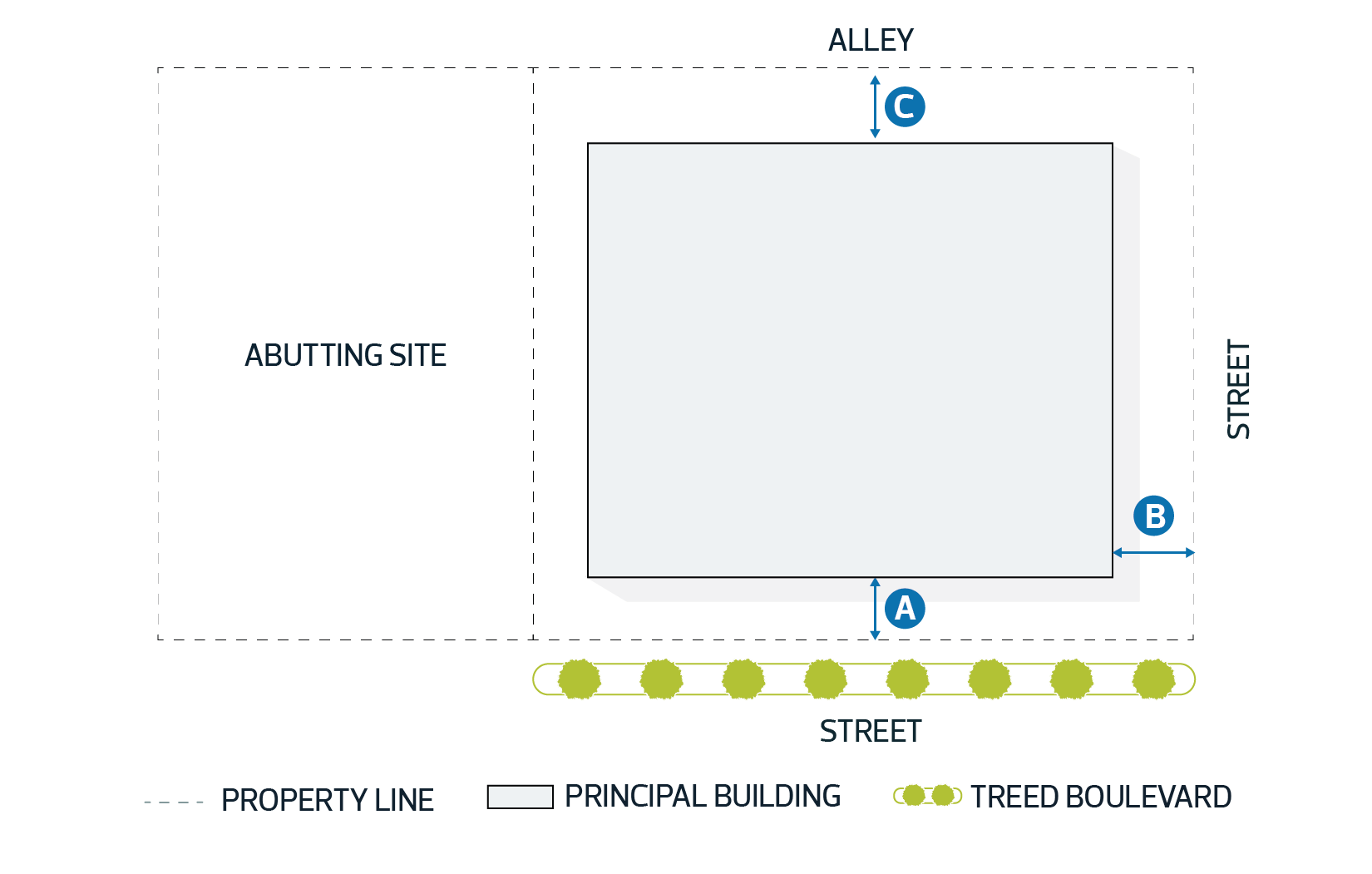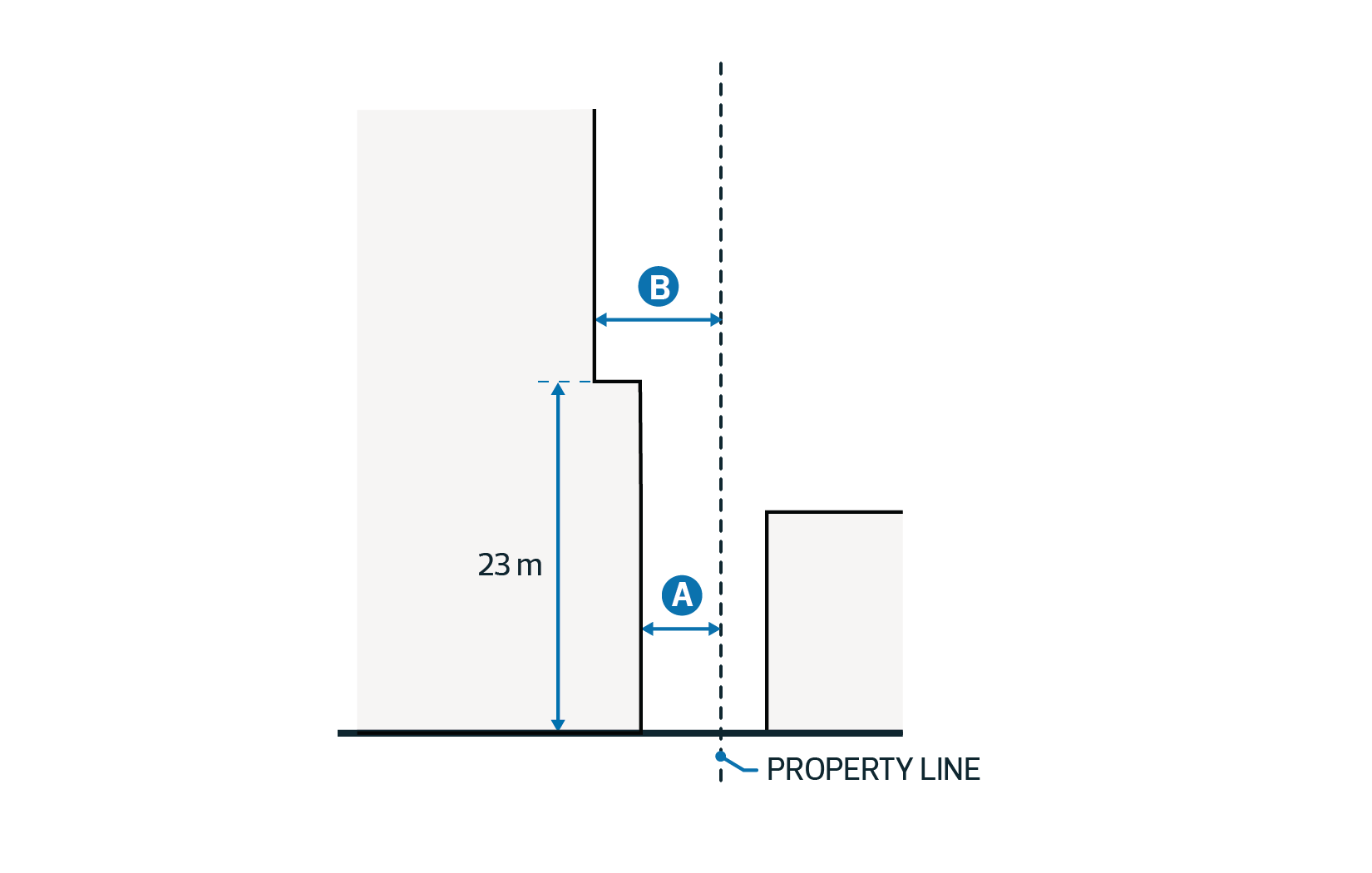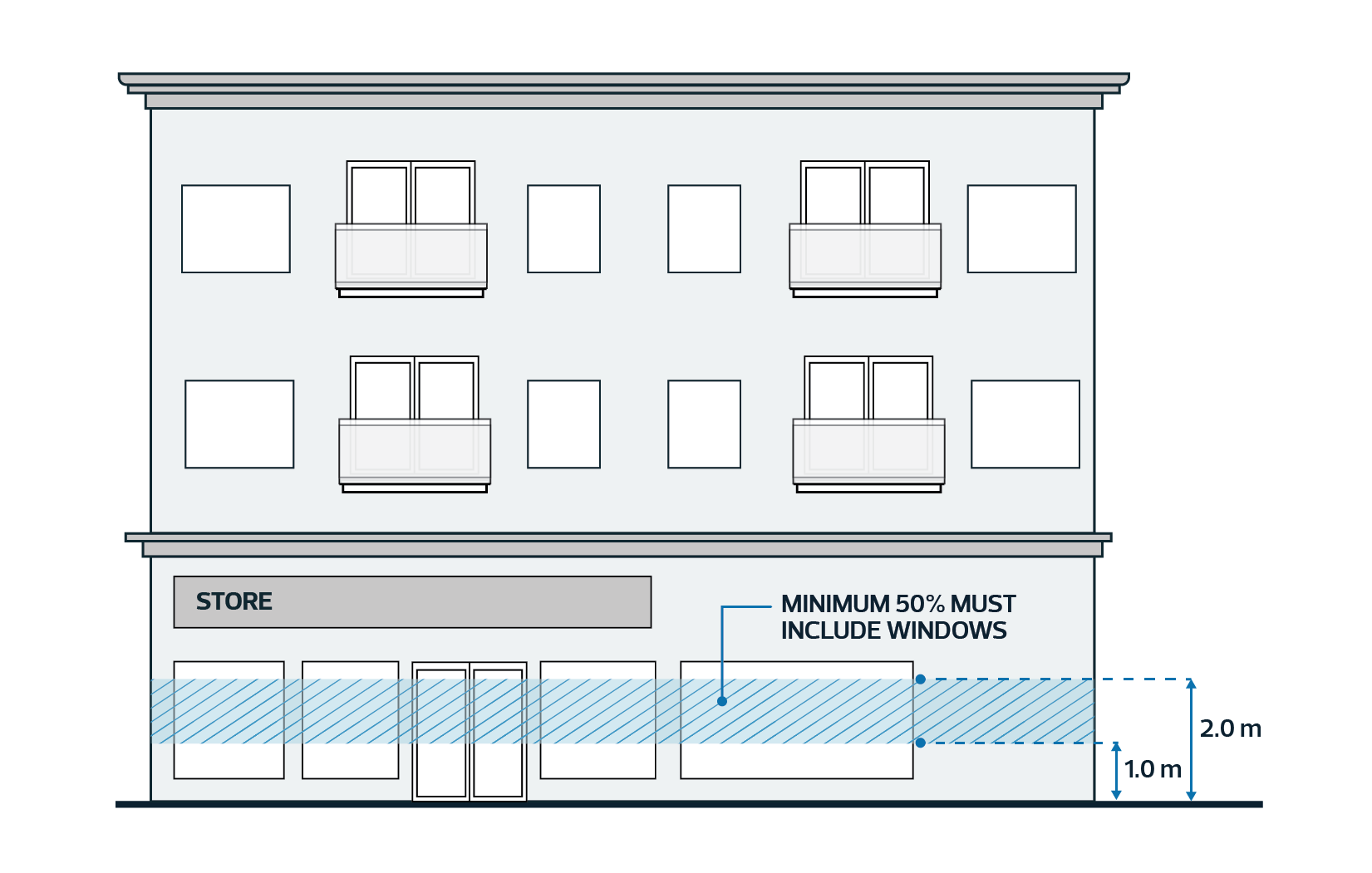To allow for high-rise Residential development that ranges from approximately 9 to 20 Storeys. Row Housing is not intended in this Zone unless it forms part of a larger multi-unit Residential development. Limited opportunities for community and commercial development are permitted to provide services to local residents.
Residential Uses |
||||||||||||
| 2.1. | Home Based Business # | |||||||||||
| 2.2. | Residential, limited to: | |||||||||||
|
||||||||||||
Commercial Uses |
||||||||||||
| 2.3. | Centre City Temporary Parking | a | ||||||||||
| 2.4. | Food and Drink Service | |||||||||||
| 2.5. | Health Service | |||||||||||
| 2.6. | Indoor Sales and Service | |||||||||||
| 2.7. | Minor Indoor Entertainment | |||||||||||
| 2.8. | Office | |||||||||||
| 2.9. | Residential Sales Centre | |||||||||||
Community Uses |
||||||||||||
| 2.10. | Child Care Service | |||||||||||
| 2.11. | Community Service | |||||||||||
| 2.12. | Library | |||||||||||
| 2.13. | Park | |||||||||||
| 2.14. | Special Event | |||||||||||
Agricultural Uses |
||||||||||||
| 2.15. | Urban Agriculture | |||||||||||
Sign Uses |
||||||||||||
| 2.16. | Fascia Sign | |||||||||||
| 2.17. | Freestanding Sign | |||||||||||
| 2.18. | Portable Sign | |||||||||||
| 2.19. | Projecting Sign | |||||||||||
Residential Uses | ||||||||||
| 3.1. | Home Based Businesses must comply with Section 6.60. | |||||||||
| 3.2. | Residential | |||||||||
| ||||||||||
Non-Residential Uses | ||||||||||
| 3.3. | Non-Residential Use developments, excluding Parks, Special Events and Signs, must only be located on the Ground Floor or second Storey of residential buildings, except: | |||||||||
| ||||||||||
Commercial Uses | ||||||||||
| 3.4. | The maximum Floor Area for Commercial Uses, other than Residential Sales Centres, is 300 m2 per individual establishment. | |||||||||
| 3.5. | Centre City Temporary Parking must comply with Section 6.120. | a | ||||||||
| 3.6. | Residential Sales Centres may be approved for a maximum of 5 years. Subsequent Development Permits for Residential Sales Centres on the same Site may only be issued as a Discretionary Development. | |||||||||
Community Uses | ||||||||||
| 3.7. | Child Care Services must comply with Section 6.40. | |||||||||
| 3.8. | Special Events must comply with Section 6.100. | |||||||||
Sign Uses | ||||||||||
| 3.9. | Fascia Signs, Freestanding Signs, Portable Signs, and Projecting Signs are limited to On-premises Advertising. | |||||||||
| 3.10. | Sign Uses must comply with Section 6.90. | |||||||||
Uses with Floor Area Exceptions | ||||||||||
| 3.11. | The Development Planner may consider a variance to the maximum Floor Area of a non-Residential Use if adequate mitigation measures are used to reduce negative impacts to Abutting Uses or Sites, including: | |||||||||
| ||||||||||
| 4.1. | Maximum Height and maximum Floor Area Ratio must comply with Table 4.1: |
| Table 4.1. Maximum Height and Floor Area Ratio | |||
|---|---|---|---|
| Subsection | Modifier on Zoning Map | Maximum Height | Maximum Floor Area Ratio |
| 4.1.1. | h50.0 | 50.0 m | 4.5 |
| 4.1.2. | h65.0 | 65.0 m | 5.5 |
| 4.2. | The maximum Floor Area Ratio is increased by 1.0 where a minimum of 10% of all Dwellings: | ||||||||||||
|
|||||||||||||
| 4.3. | The maximum Floor Area Ratio is increased by 1.0 where: | ||||||||||||
|
|||||||||||||
| 4.4. | Development must comply with Table 4.4: |
| Table 4.4. Setbacks Abutting Streets and Alleys | |||
|---|---|---|---|
| Subsection | Regulation | Value | Symbol |
| Setbacks Abutting Streets | |||
| 4.4.1. | Minimum Setback where a Treed Boulevard is present | 3.0 m | A |
| 4.4.2. | Minimum Setback where a Treed Boulevard is not present | 4.5 m | B |
| Unless the following applies: | |||
| 4.4.3. | Minimum Setback for portions of development less than or equal to 16 m in Height with:
|
1.0 m | - |
| Setbacks Abutting Alleys | |||
| 4.4.4. | Minimum Setback | 3.0 m | C |
Diagram for Subsections 4.4.1, 4.4.2, and 4.4.4
|
|||
| 4.5. | Development must comply with Table 4.5: |
| Table 4.5. Minimum Setbacks from Abutting Sites | |||
|---|---|---|---|
| Subsection | Regulation | Value | |
| 4.5.1. | Minimum Setback | 3.0 m | |
| Unless the following applies: | |||
| 4.5.2. | Minimum Setback for portions of development greater than 23.0 m in Height | 6.0 m | |
Diagram for Subsection 4.5.1 and 4.5.2
|
a | ||
| 4.6. | Development must comply with Table 4.6: |
| Table 4.6. Tower Regulations | ||
|---|---|---|
| Subsection | Regulation | Value |
| 4.6.1. | Maximum Tower Floor Plate for portions of Towers greater than 23.0 m in Height | 850 m2 |
| 4.6.2. | Minimum separation between Towers on the same Site or Abutting Sites, for portions of Towers greater than 23.0 m in Height | 25.0 m |
| 4.6.3. | Minimum Setback for portions of Towers greater than 23.0 m in Height from an Abutting Street | 6.0 m |
| 4.7. | Towers must mitigate microclimatic impacts based on a Wind Impact Assessment and Sun Shadow Impact Study, where applicable, in compliance with Section 7.140. | ||||||
| 4.8. | The Development Planner may consider a variance to the regulations in Table 4.6, taking into consideration factors such as: | ||||||
|
Building Design Regulations | ||||||||
| 5.1. | Where a building wall: | |||||||
| ||||||||
| 5.2. | Subsection 5.1 does not apply to Facades of a Tower above: | |||||||
| ||||||||
| 5.3. | To promote pedestrian interaction and safety, Ground Floor non-Residential Facades must comply with the following: | |||||||
| ||||||||
| 5.4. | On Corner Sites, the Facade design and materials must wrap around the side of the building to provide a consistent profile facing both Streets. | |||||||
Entrance Design Regulations | ||||||||
| 5.5. | For new buildings and additions, where a Use is located on the Ground Floor adjacent to a Street, the main entrance for non-Residential Uses, and the main shared entrance for Multi-unit Housing or Supportive Housing must: | |||||||
| ||||||||
| 5.6. | Dwelling units with at-grade entrances must provide a semi-private space to act as a transition area from Streets. This can be established through the use of features such as Fencing, Landscaping, porches, or other similar measures. | |||||||
| 5.7. | Main entrances must incorporate weather protection features in the form of canopies, awnings, overhangs, common vestibules, recessed entrances or other architectural elements to provide all-season weather protection to pedestrians and to enhance the visibility of entrances. | |||||||
Parking, Loading, Storage and Access |
|||||||||
| 6.1. | Vehicle access must be from an Abutting Alley. Where there is no Abutting Alley, vehicle access must: | ||||||||
|
|||||||||
| 6.2. | Despite the Setbacks specified in Tables 4.4 and 4.5: | ||||||||
|
|||||||||
| 6.3. | Above-ground Parkade Facades facing a Street or a Park must be screened from view at ground level and wrapped with Residential, Commercial or Community Uses with a minimum depth of 8.0 m. | ||||||||
Other Regulations |
|||||||||
| 6.4. | Despite the Setbacks specified in Table 4.4, outdoor display areas and Public Space associated with a Main Street Development may be located in a Setback Abutting a Street. | ||||||||

